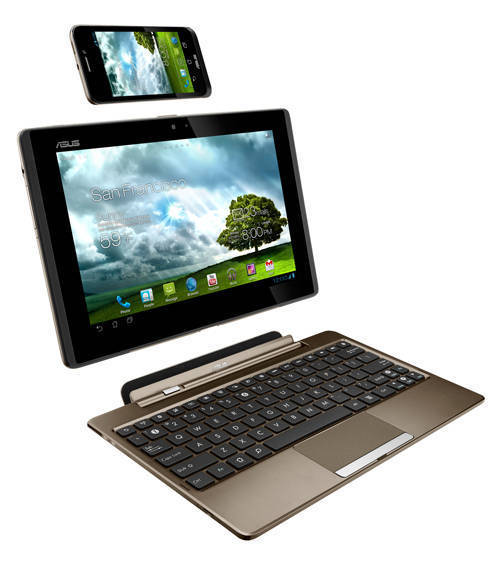24-inch screen docks with Asus's Android PadFone

Asus's PadFone took the idea behind the same company's Transformer range one step further…. but in the future, it may go another step further. At last week's Computex 2012 trade show in Taiwan, Asus showed a 24-inch monitor that could also dock with its PadFone, displaying its Android 4.0 (Ice Cream Sandwich) operating system on a big screen.
The PadFone already works as a standalone phone, and converts into a 10-inch touch-screen tablet by slotting the phone into a dock in the back of the screen. As with the Asus Transformer, the tablet docks with a keyboard to provide something that looks like a traditional netbook or, more accurately, smartbook. The new docking monitor -- which is not yet a product -- converts the PadFone into a fourth type of system: a desktop computer.
 Asus PadFone with keyboard dock
Asus PadFone with keyboard dock
The 24-inch PadFone monitor has a 1920 x 1200 pixel screen capable of playing Full HD, plus four USB 3.0 ports. It also has HDMI, VGA and DVI ports, so you can also use it with a PC and other devices. However, it is not a touch-sensitive screen, so you have to run Android 4 using a keyboard and mouse.
The phone, tablet and keyboard dock all have their own batteries, which makes all-day computing a simple matter, even if your day is unusually long. The monitor runs off mains power, of course, and presumably recharges the phone while it's docked.
One of the drawbacks is that the ARM chip in a phone is much less powerful than a typical desktop processor, but it seems to work -- see the Engadget video below.
Although the PadFone is an innovative idea, it's also an old one. As I pointed out in an article for Asus's Tech In Style magazine (With the PadFone, a dream becomes reality), it's an example of what we used to call "modular computing". In other words, you use the same "compute module" to power a large number of different devices.
Earlier examples of modular computers, such as IBM Research's MetaPad and a similar device from the US-based Modular Computer Company, never made it to market or were unsuccessful. The PadFone could turn out to be the first successful device of this type, having already gone on sale in Taiwan. It might never be a big hit, but it's still making the idea more widely known.
For modular computing to become really popular, however, I suspect there will need to be some standardisation and a long term commitment to the dock. As I wrote in Tech In Style:
"If the PadFone takes off, I hope that ASUS will consider adding further modules, such as in-car and hi-fi docks. Some people might even be interested in having a desktop version, as promised by IBM’s MetaPad. ASUS could also encourage other companies with different specialisations — gaming, cycling, climbing, deep- sea diving, whatever — to create their own docks."
I won't be surprised if modular computing never takes off. It certainly simplifies things to have all your data in one module that you can use in different situations, and you only need one mobile phone SIM. However, modular computing was based on two propositions: first, that processors and memory chips are expensive, so it makes sense to re-use them; and second, that transferring data between numerous devices -- phone, tablet, laptop, desktop etc -- is inconvenient if not impossible.
Today, neither of those things is true. Computer power is so cheap nowadays that most of it either goes unused or is wasted, while synchronising data across devices is relatively simple given cloud support.
But it's still a fascinating idea….
https://www.youtube.com/watch?v=cS6Pd9zmFZ4 Asus PadFone Docking Monitor